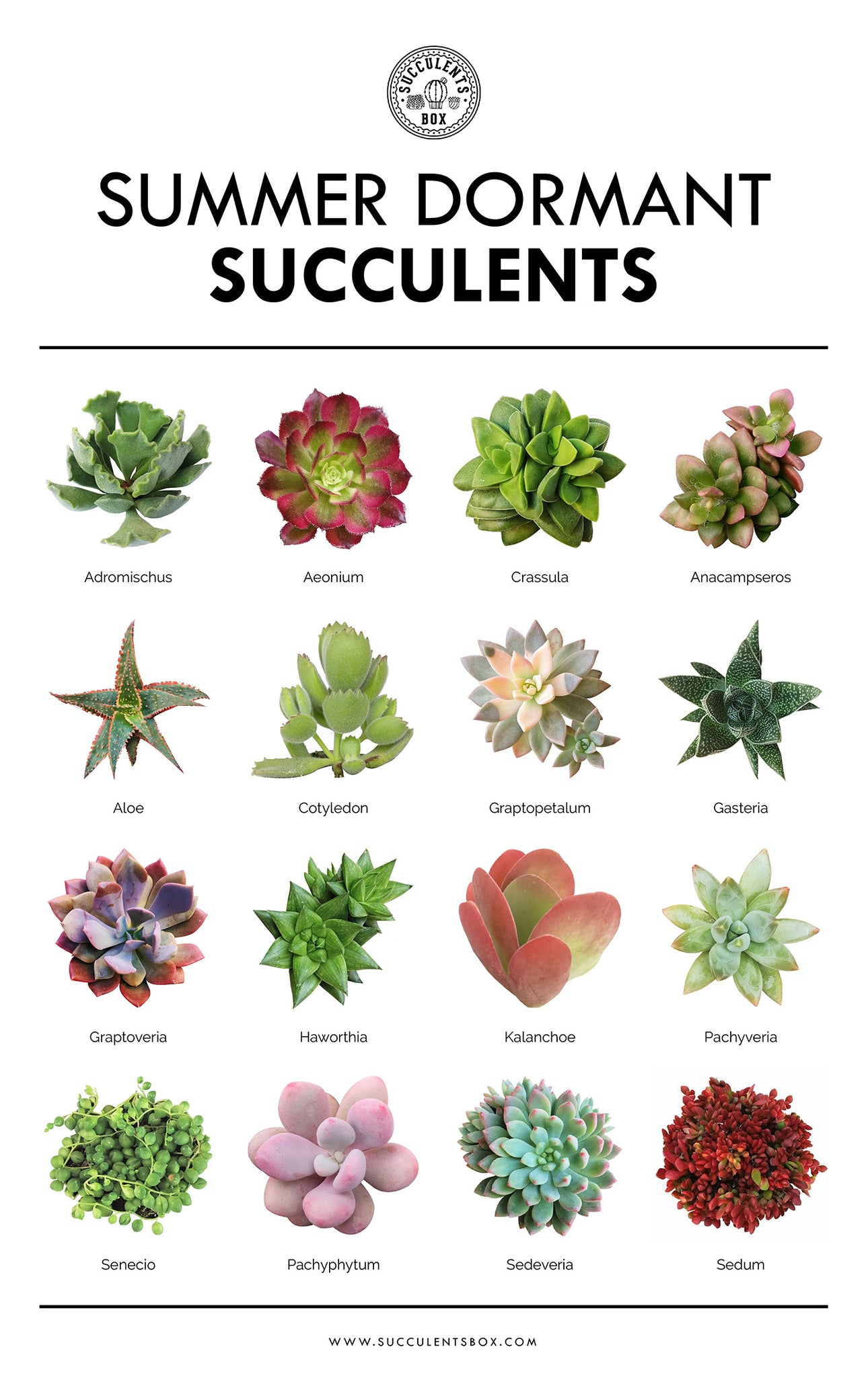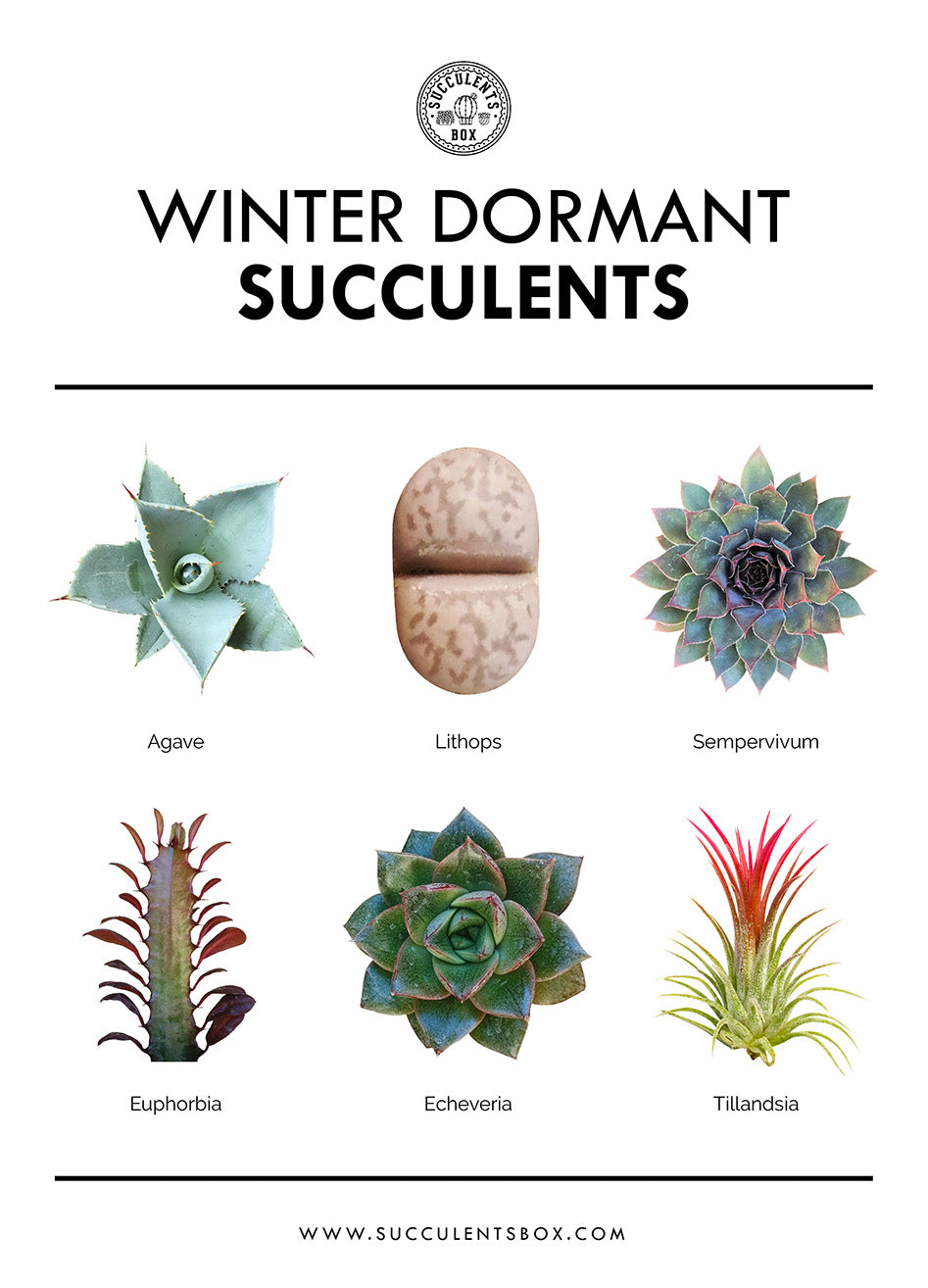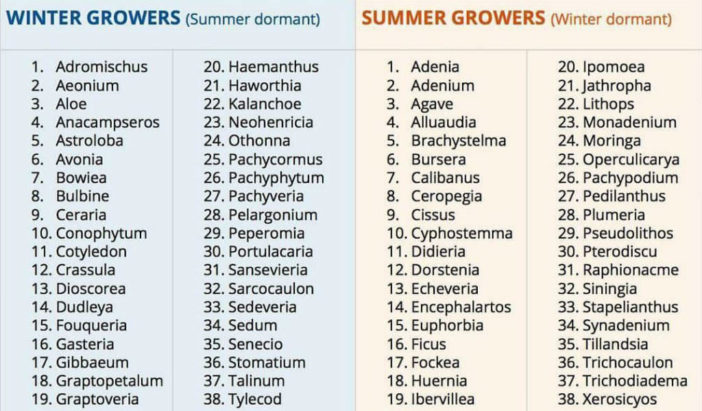It’s important to understand the seasonal changes of your succulent in order to properly care for it. Knowing whether your succulent is in a period of winter or summer dormancy can help you provide the best care for it.
If you purchase something from this website, we may be compensated for it. This compensation helps us give you free content to enjoy without any additional costs to you.
This article provides information on succulent growing seasons, as well as guidelines on how to provide your succulents with the proper care throughout the year.
The increasing popularity of succulents has made them a staple in gardens around the globe. Not only are they stunning to look at, they are also very resistant to drought and perfect for novice gardeners.
In other words, with the widespread affection for growing plants, there may be some confusion about when to actively cultivate them.
Table of Contents
Succulent dormancy explained
Succulents, like other plants, will not always grow at the same rate throughout the year. Temperature changes can cause them to go through periods of dormancy when growth slows down and periods of active growth when they grow more quickly.
The care requirements for a succulent depend on the climate it is grown in. For instance, a succulent grown in Phoenix, Arizona will need to be managed differently than one grown in New York City, New York. This is because the amount of dormancy a succulent will experience, and the care needs associated with it, vary depending on the climate.
Succulents are not limited to the two categories of summer and winter growers; rather, they are known to be “opportunistic growers”–growing when environmental conditions are favorable and slowing their growth when conditions are not optimal.
This comment from a succulent forum is so insightful. It’s essential to understand that your plant will signal when it needs care, and this is the very essence of horticulture.
In other words, let’s explore how taking advantage of dormancy can impact succulent care and cultivation.
Minimum Temperature Tolerance
Succulents come with a wide range of temperature tolerances, however not all species are able to withstand the same conditions. For instance, Sempervivum are typically hardier and can survive colder temperatures, whereas Echeveria are often more delicate and require warmer temperatures.
This means that succulents need to be kept in temperatures that are not too hot, as they cannot tolerate extreme heat and can be damaged or destroyed.
Sempervivum can withstand cold temperatures such as frost, snow and ice, but prefer cooler climates. On the other hand, Echeveria is more tolerant of warmer conditions but cannot survive in extreme cold.
It appears that for most succulent species, the best growth period is during the spring and fall when temperatures are more moderate. This is especially the case for Echeverias and Sempervivums.
Most succulents will enter a state of dormancy when exposed to temperatures that are too hot or too cold, until the conditions become more favorable.
During the summer months, most succulents, commonly referred to as “summer growers,” tend to slow down their growth. However, there are some exceptions, as some succulents can still prosper in higher temperatures. Generally speaking, succulents thrive best in milder temperatures.
Succulents need water… most of the time
The most debated topic regarding succulent dormancy is the optimal frequency of watering. During dormancy, succulents are in a state of survival, not growth, and thus require less water than when actively growing. As a result, it is best to leave succulents alone during dormancy and to reduce the amount of water given.
In other words, if a succulent is kept indoors, it won’t enter a state of dormancy, so it can be watered at a consistent rate all year long.
The secret to keeping succulents in good condition is to water them only when the soil is dry and observing the leaves. As the forum member suggested, succulents will indicate their needs if you know what signs to look for.
Generally speaking, succulents that enter into a state of dormancy in cold weather will require minimal watering–it all depends on how cold it gets. If the temperature drops to 50 degrees Fahrenheit, then the plant will still be able to grow, but if it drops to 5 degrees Fahrenheit, then the plant may not be able to survive.
Succulents may not drink much water when temperatures soar in summer, but they still need to keep their roots cool. To survive the heat and drought, they are likely to focus on growing deeper roots.
Even though you will have to water your plants less than usual, it is important to not completely deprive them of water as this can cause them to become excessively dried out and eventually die.
Aeoniums can be quite spectacular, depending on the conditions they’re in. Check out this conversation to see some impressive displays of these plants in varying weather.
If Aeoniums are outside during very high temperatures, providing them with some water can help their roots stay cool.
It’s essential to know what type of succulents you have if you want them to stay healthy. Check out my article on succulent identification if you need help figuring out what you have.
Winter Dormancy
Succulents are active during the spring, summer, and fall, but will enter a period of reduced growth during the hottest days of the summer (typically July/August in the United States). During the winter, these plants go dormant.
These plants may favor higher temperatures compared to other succulents, but they still don’t appreciate overly hot temperatures and will take measures to protect themselves from its effects.
When temperatures drop below 40°F, the growth of these plants will slow significantly. Make sure to only provide the necessary amount of water to avoid them from decaying while dormant.
Summer Dormancy
Succulents are most active during the fall, winter and spring months, but may enter a mini dormancy period during the colder months of December and January. They prefer cooler temperatures for optimal growing during the summer season.
To ensure your succulents stay healthy, it’s best to shield them from extreme heat and reduce watering during the summer months.
When nighttime temperatures dip below 60°F and daytime temperatures remain slightly warmer, the plants will experience the greatest growth.
Succulent “Dormancy” Table
Now that we have discussed some of the basics, let’s move on to a comparison of summer and winter growers.
While this is a generalization, there may be some variations based on species or climate. The list below can be used as a guide to getting started with understanding the growth cycle of a particular genus.
You can get more information on each species by clicking on the genus names in the table.
Winter Dormant Succulents
Flourish during the spring, summer and autumn months.
- An assortment of cold-hardy plants includes Adenium, Aloinopsis, Agave, Ceropegia, Echeveria, Echinocactus, Euphorbia, Ferocactus, Mammillaria, Mangave, Notocactus, Opuntia, Pachypodium, Pedilanthus, Rhipsalis, Schlumbergera, Sedum, Sempervivum, Stapelianthus, Tillandsia, and Titanopsis.
Summer Dormant Succulents
- Adromischus, Aeonium, Aloe, Anacampseros, Cotyledon, Crassula, Dudleya, Gasteria, Graptopetalum, Graptoveria, Haworthia, Kalanchoe, Pachyphytum, Pachyveria, Peperomia, Portulacaria, Sansevieria, Sedeveria, Sedum (non-cold hardy varieties), and Senecio are all succulent plants.
Rearrange the words in a different order:
A different way of saying the same thing is to reword it.
Transplanting and propagating dormant succulents
Succulents grown indoors don’t go through a natural period of rest, so it is not a difficulty to repot or reproduce them indoors at any time of the year.
For succulents grown outdoors, the best time to plant is usually during the spring or fall when the plant is in its active growing season. This will provide the best outcomes.
One of the major hurdles of planting or transplanting succulents outside is dealing with drastic temperature fluctuations.
For instance…
I gave my sister-in-law in Southern California some succulents as a gift and planted them in June. Despite the fact that the area was experiencing a heatwave, with temperatures soaring to roughly 100°F (38°C), the succulents were placed in the ground outside.
We planted the succulents in an area that was exposed to direct sunlight, which was too intense for the 2″ plants to adjust to. As a result, they weren’t able to survive the heat and the strong light.
When I was in Utah, I couldn’t keep succulents outdoors in the wintertime as they are not used to such low temperatures, even the varieties that are adapted to cold weather.
Although succulents thrive in a moderate climate that isn’t too extreme in temperature, they can be planted at any time of the year.
Transplanting succulents is most successful during their active growing season, as they will be growing and will therefore have a quicker recovery time and be more likely to thrive in their new environment.
Propagating succulents typically has the same process. The best time to do it is usually during spring or fall, when the plant is in its active growth period. However, you can propagate succulents other times of the year, though the rate of growth may be slower.
Repeat the same advice for indoor succulents: Propagation is easy and can be done year round, and the plants will grow at a similar rate.
Some Observations
I’m suggesting that you consider specific genera of succulents that fit into the categories listed above. This should help you identify which plants you own belong in each category.
Alternate phrasing: Lower temperatures, chillier weather
Let’s begin with Sempervivum: a plant close to my heart, for it is one of the few succulents that can withstand the cold winters in Utah.
These succulents thrive in the springtime, producing so many new offshoots that you won’t know what to do with them all.
During the temperate months of spring, the leaves of the plants become large, plump, and firm.
Once temperatures reach 90 degrees Fahrenheit or higher, these hens and chicks will begin to exhibit signs of discomfort. They may appear to be shrinking or become more compact and tense. It is clear that the heat is not to their liking.
When autumn arrives and the temperature begins to drop, people tend to open up a bit more. As the leaves on the trees start to change to vibrant, autumnal colors, they will eventually prepare for the upcoming winter.
These plants can usually make it through winter with little to no water, as long as there is enough rain and snow to keep them hydrated. However, if the weather gets dry and unusually warm, it’s a good idea to give them some water, just make sure there is no freezing temperature in the forecast.
Once the temperature rises, start increasing the amount of water you give your hens and chicks. Adding some fertilizer in April will help make them flourish.
Warmer Temperatures
When you think of the desert, what images come to mind? Cacti, and for those who appreciate succulents, large Agave plants may also come to mind. These types of plants thrive in hotter climates.
These succulents thrive in warm weather and will do best when temperatures reach above 70 degrees Fahrenheit. However, when it gets too hot (over 100 degrees Fahrenheit), they will take a break from growing and may struggle to grow during the winter months.
Many cacti need to be exposed to extreme temperatures, such as 40 degrees for a minimum of 60 days, before they will bloom. This helps to showcase their true beauty.
Pay attention for pretty succulents
In other words, you’ll be able to tell when your succulent is thriving by observing its needs and responses to your care.
I cannot emphasize enough the importance of getting to know your succulents, the environment where you are growing them, and how you interact with them. It is helpful to be aware of the general guidelines for caring for succulents, but you must also develop an understanding of your succulents’ particular needs and your own tendencies when it comes to tending to them.
Water your succulent more often if its growth rate is picking up, but reduce the frequency if it appears to be slowing down. To assess the plant’s health, observe the leaves – if they appear firm, healthy and content, hold off on watering for a while.
Reformulated: If the plants appear limp, dull, and wrinkled, give them a bit more water. If they are yellowing, translucent, and about to burst, reduce the amount of water and wait until they return to a healthier state before watering again.
Succulents are much like Goldilocks in their growth preferences; they thrive when conditions are “just right” – not too hot nor too cold. Providing them with favorable conditions will ensure their optimal growth.
FAQ
Do succulents need light during dormancy?
To ensure your cactus or succulent remains healthy, put it in a spot that receives plenty of indirect light. Give the plant at least three to four hours of sunlight per day, but remember that during the winter season the plant needs less light.
Does dormancy matter for indoor succulents?
Succulents grown inside don’t go through a full period of dormancy, so it’s not necessary to wait for a specific time of year to transplant or propagate them. However, if they’re planted outside, it’s best to wait until they’re in their active growing season before disturbing them.
How do I make my succulents dormant?
Some succulents enter dormancy during winter, while others experience this period of decreased growth during the summer. The length and timing of dormancy is determined by environmental factors such as reduced sunlight and temperature.
Do you water succulents during dormancy?
Succulents need water but when they are in a dormant state, they should not be watered as much as when they are actively growing. During dormancy, the succulent is in a state of survival and does not require a lot of water to sustain itself. However, if the plant does not enter into a dormant period, it will keep growing and require more water.
What month do succulents go dormant?
During the fall, winter and spring, summer dormant succulents grow the most, while they may enter a mini dormancy during the coldest months (December/January in the United States). These plants prefer cooler temperatures when actively growing.



